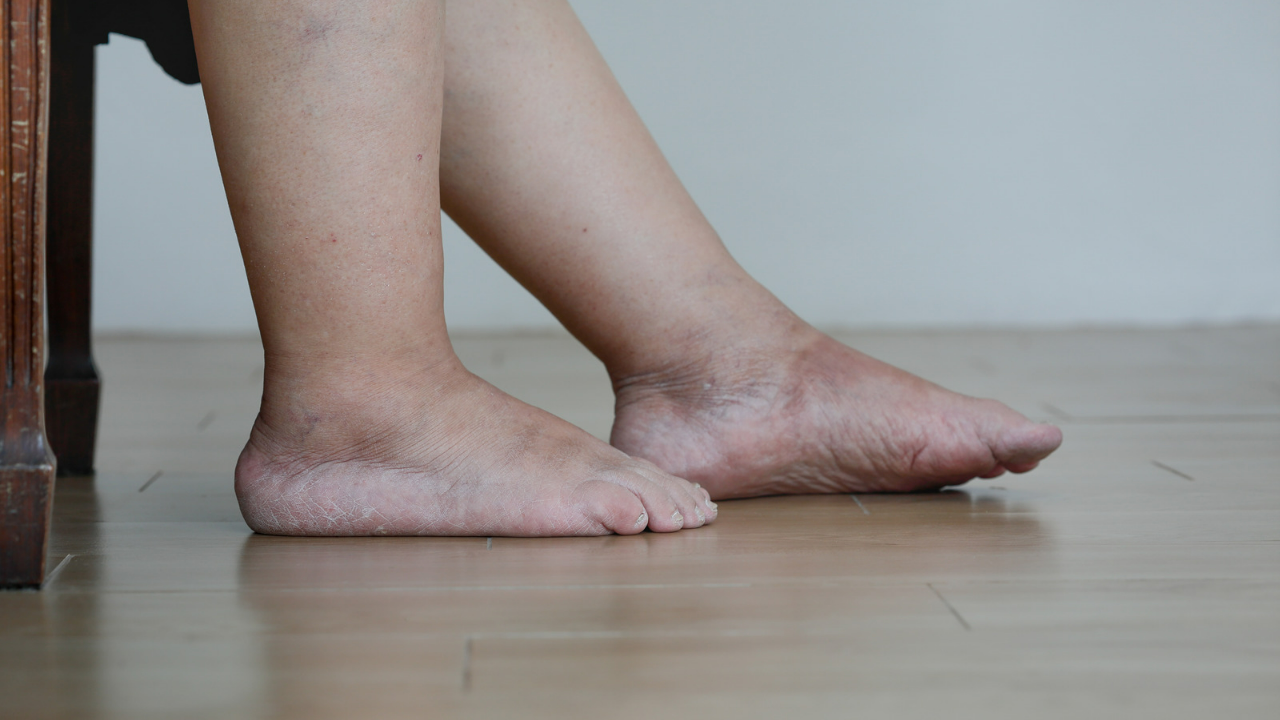What is Charcot Foot?
Charcot foot also known as Charcot arthropathy is a disease that progressively degenerates foot joints, bones, and soft tissues. Patients with this illness commonly experience bone resorption, bony destruction, and deformities from loss of sensation.
The early stages of Charcot foot occurrence are characterized by little to zero physical signs. However, the disease eventually progresses to the development of painful sores and foot deformation.
The disease weakens the foot bones, the joints and causes breakage and dislocation. If left untreated for a prolonged period, it can lead to permanent deformity and amputation. It is worth noting that this disease is a rare but severe complication of peripheral neuropathic, especially in diabetic patients.
Causes of Charcot Foot
Sensation loss is one of the top causes of Charcot foot. Patients experiencing numbness in their feet and legs can develop this condition. The numbness in diabetes is common with peripheral neuropathy, which is closely associated with alcohol use disorder, inflammatory issues, such as sarcoidosis or psoriasis, drug abuse, and damage to the peripheral nerves.
Charcot foot is a condition that weakens and degenerates the bones in the foot and ankle. It is often caused by nerve damage, which can be caused by various factors such as slow-healing wounds or infections, fractures or sprains, slow-healing foot surgery, and calcium deficiency. But there is no one specific cause of Charcot foot.
Symptoms of Charcot Foot
There are three key Charcot foot stages: the fragmentation and destruction stage, the coalescence stage, and the reconstruction stage.
In stage one also commonly known as the fragmentation and destruction stage, patients commonly notice redness and swelling of the foot and ankle. Moreover, these areas exhibit comparatively high temperatures than other parts of the foot. Soft tissue swelling and foot bone fractures occur in this stage, leading to joint dislocation and complete bone softening.
The bottom of the foot of patients with Charcot foot changes from its conventional structure to a flat or rocker-bottomed one. This stage can last for up to a year and result in bony protrusion appearances at the bottom of the patient’s feet.
While, patients in stage two or coalescence, experience less swelling, warmth, and redness since the body attempts to heal the damage in stage one. The initial joint and bone destruction slows down in this stage.
The third and final stage, on the other hand, exhibits actual joint and bone healing. In this stage, further damage to the foot stops. However, the affected joints and bones fail to return to their original structure, remaining unstable. This foot condition is commonly susceptible to sores and ulcers, as well as other deformities, and in extreme cases, patients may require amputation.
Charcot Foot Diagnosis
Although Charcot foot is difficult to diagnose in its early stage due to non-detection by x-rays, professionals can identify it with adequate knowledge about its symptoms. Since diabetic patients with neuropathy are susceptible to this condition, professionals and patients need to watch out for increased skin temperature, swellings, and redness around the foot and ankle.
X-rays and MRIs help diagnose the disease in later stages. And health professionals may incorporate physical exam reviews, medical history assessments, and other relevant tests for neuropathy, such as the pinprick test, the neurometer test, and the Semmes-Weinstein 5.07/10-gram monofilament test, into their Charcot foot diagnosis. These tests analyze nerve fiber pressure and touch sensitivity, assess the ability to feel pain, and identify peripheral nerve dysfunction.
Treatment Options for Charcot Foot
Charcot foot treatment significantly depends on relieving undue stress on the affected foot. The condition requires several months to heal. Some common considerations for treating Charcot foot include:
- Staying off the foot
- Preventing new problems and complications
- Leveraging surgery for bone repairs
- Taking extra care of the foot
To help restrict movements and reduce swelling, it is important to keep the affected foot in a cast for several months. Additionally, using crutches, wheelchairs, knee walkers, and elevating the leg periodically can help relieve pressure off the foot. These measures are essential for the proper treatment of Charcot foot.
Patients can use prescription footwear to prevent new issues and complications from occurring. Braces can also help alleviate pressure points that may cause injury or pain. To aid in the healing process, patients may need to modify their daily physical activity. These measures can help improve the recovery process for those with Charcot foot.
Surgical reconstruction of the foot and ankle is ideal for eliminating foot instability and treating severe cases that surpass aid from special shoes and braces. In addition to treating bed sores, surgeons can realign and fuse foot bones to maximize stability. These professionals can minimize or eliminate recurrent sores or skin cuts by smoothening sharp bones.
To prevent Charcot foot, it is important to pay close attention to the condition of your feet. This includes regular check-ups with a healthcare professional, daily self-inspections, maintaining good foot hygiene, and wearing properly fitting shoes and socks. By taking these precautions, you may be able to detect any changes in your feet early on and seek treatment as needed.
Bottom Line
Charcot foot attacks the feet to weaken the bones and joints, leading to sores, pains, deformities, and amputation. Diabetic patients with neuropathy are susceptible to this condition. While it can go undetected during its early stages, redness, swelling, and warmth around the foot and ankle are visible symptoms of this condition. In addition to these symptoms, doctors can leverage physical examination, health history, x-rays, MRIs, and other neuropathy-related tests to confirm the presence of this condition. Adequate management of Charcot foot includes minimizing foot pressure, preventing new cases or complications, proper foot care, and surgical procedures.



.webp)

.avif)